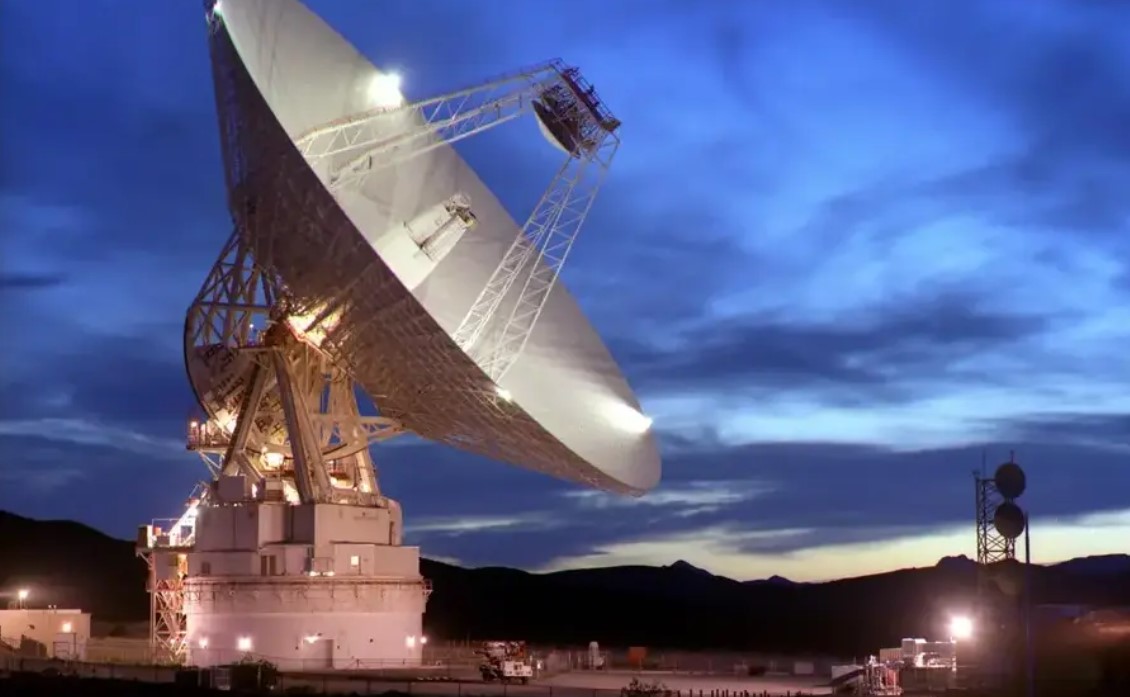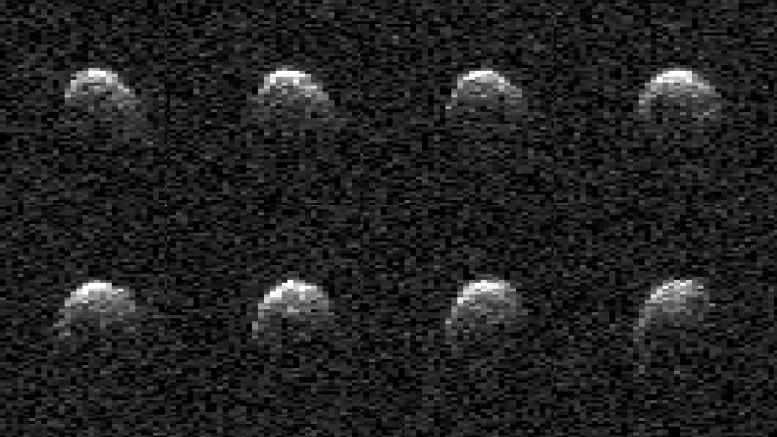
During the close approach of 2008 OS7 to the Earth on February 2, the Deep Space Network’s planetary radar collected the first detailed images of the stadium-sized asteroid. On February 2, a large asteroid flew safely past the Earth at a distance of approximately 1.8 million miles (2.9 million kilometers, or 7.5 times the distance between the Earth and the Moon).
There was no risk of an asteroid called 2008 OS7 impacting our planet, but scientists at NASA’s Jet Propulsion Laboratory in Southern California used a powerful radio antenna to better determine the size, rotation, shape, and surface details of this Near-Earth Object (NEO). Prior to this close approach, asteroid 2008 OS7 was too far from Earth for planetary radar systems to image it.

Discovery and observation
The asteroid was discovered on July 30, 2008, during routine NEO search operations by the NASA-funded Catalina Sky Survey, headquartered at the University of Arizona in Tucson. After the discovery, observations of the amount of light reflected from the asteroid’s surface showed that it was approximately 650 to 1,640 feet (200 and 500 meters) wide and that it rotated relatively slowly, making one revolution every 29 and a half hours.
The rotation period of 2008 OS7 was determined by Petr Pravec of the Astronomical Institute of the Czech Academy of Sciences in Ondrejov, Czech Republic, who observed the asteroid’s light curve – or how the object’s brightness changes over time. When an asteroid rotates, the change in its shape changes the brightness of the reflected light that astronomers see, and these changes are recorded to understand the asteroid’s rotation period.
Radar image reveals details
During a close approach on February 2, the JPL radar team used the powerful 230-foot (70-meter) Goldstone Solar System radar antenna at the Deep Space Network facility near Barstow, California, to image the asteroid. Scientists have found that its surface has a mixture of rounded and more angular areas with a slight concavity. They also found that the asteroid is smaller than previously thought – about 500 to 650 feet (150 to 200 meters) wide – and confirmed its extremely slow rotation.
Potentially dangerous, but now safe
Goldstone’s radar observations also provided key measurements of the asteroid’s distance from Earth during its passage. These measurements can help scientists at NASA’s Center for Near-Earth Object Studies (CNEOS) refine calculations of the asteroid’s orbital path around the Sun. The asteroid 2008 OS7 orbits the Sun every 2.6 years, passing from the orbit of Venus to the orbit of Mars at its farthest point.
CNEOS, run by JPL, calculates each known NEO orbit to assess the potential collision hazard. Due to its close orbit to Earth’s orbit and its size, 2008 OS7 is classified as a potentially dangerous asteroid, but the close approach on February 2 is the closest to our planet in at least 200 years.
While NASA reports on NEOs of all sizes, Congress has mandated that the agency detect and track objects 460 feet (140 meters) or larger that could cause significant damage to the earth if they collide with our planet.
The Goldstone Solar System Radar Group and CNEOS are supported by NASA’s Near-Earth Object Observing Program within the Planetary Protection Coordination Office at the agency’s headquarters in Washington, DC. The Deep Space Network receives programmatic oversight from the Space Communications and Navigation (SCaN) Program Office within the Space Operations Mission Directorate, also at the agency’s headquarters.

